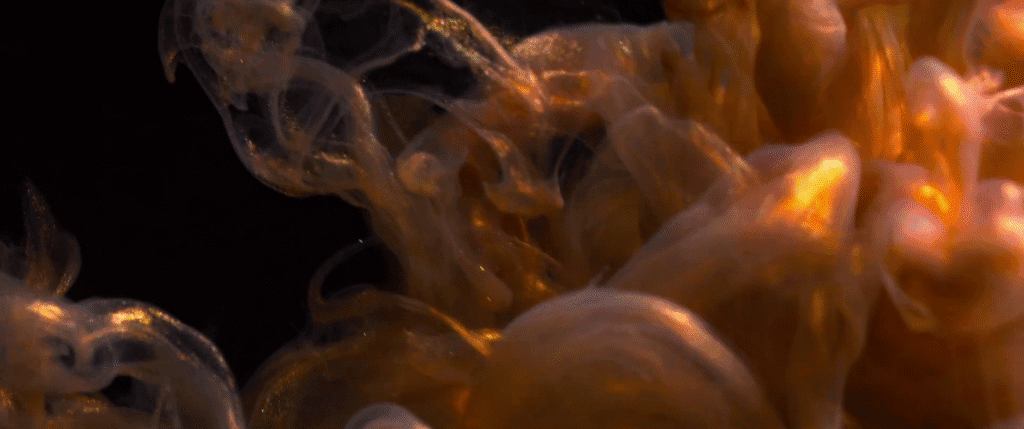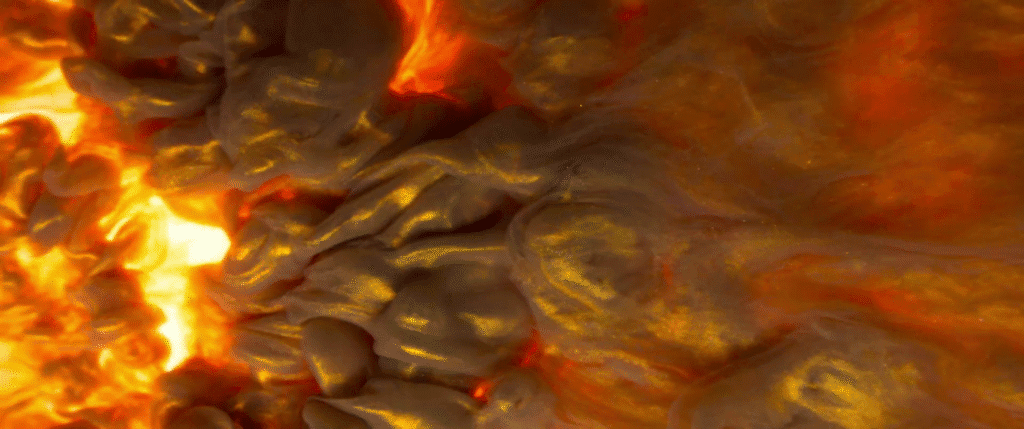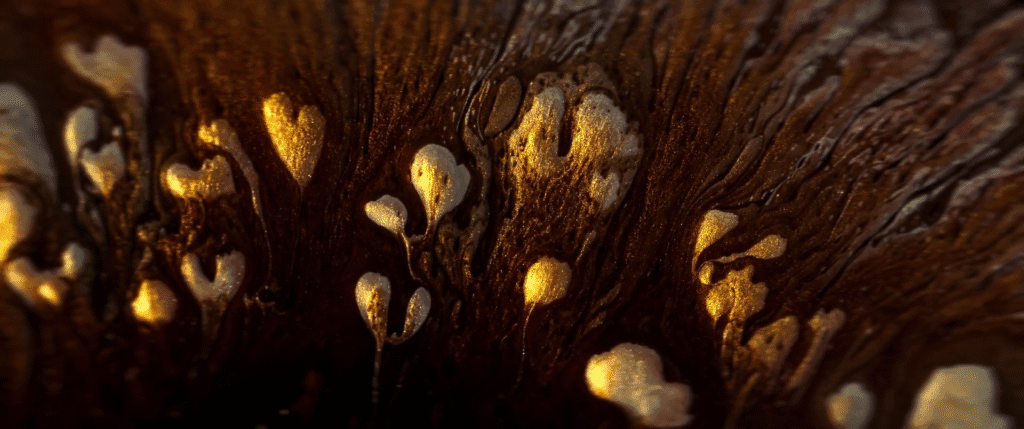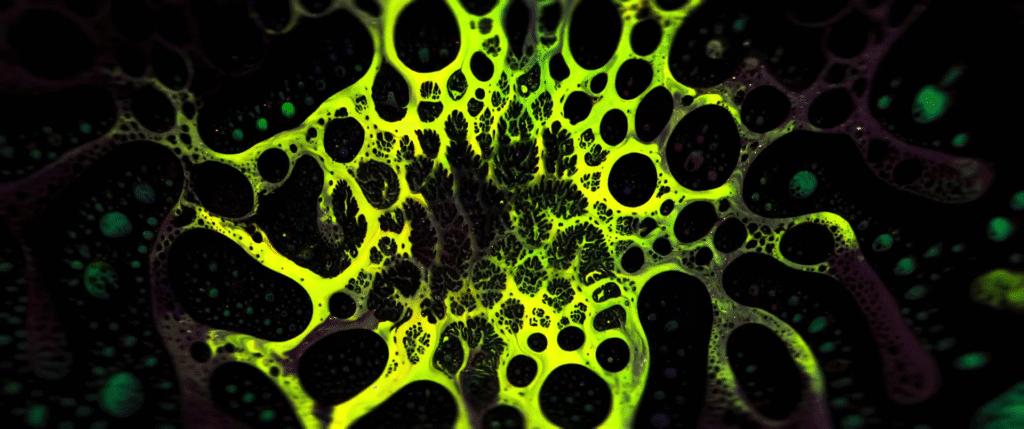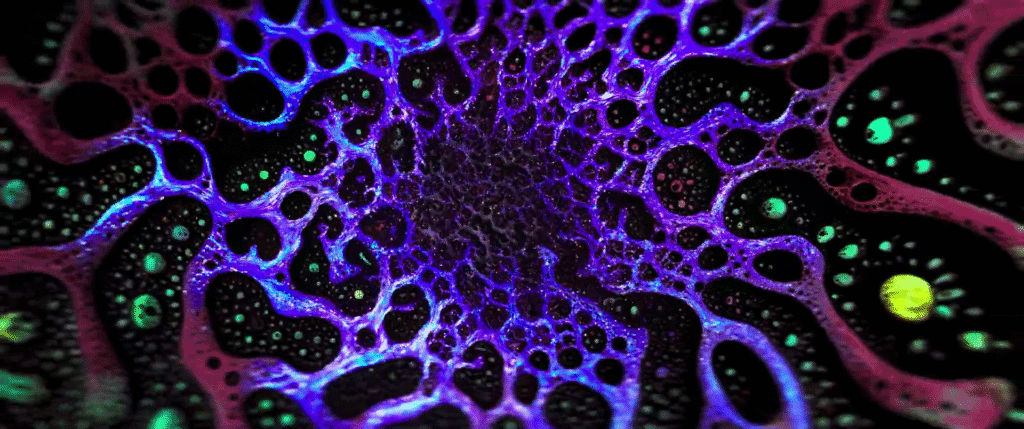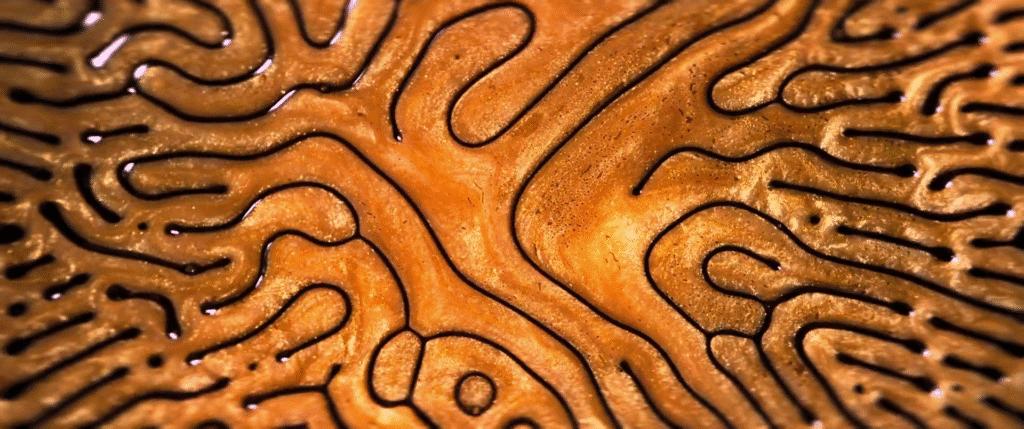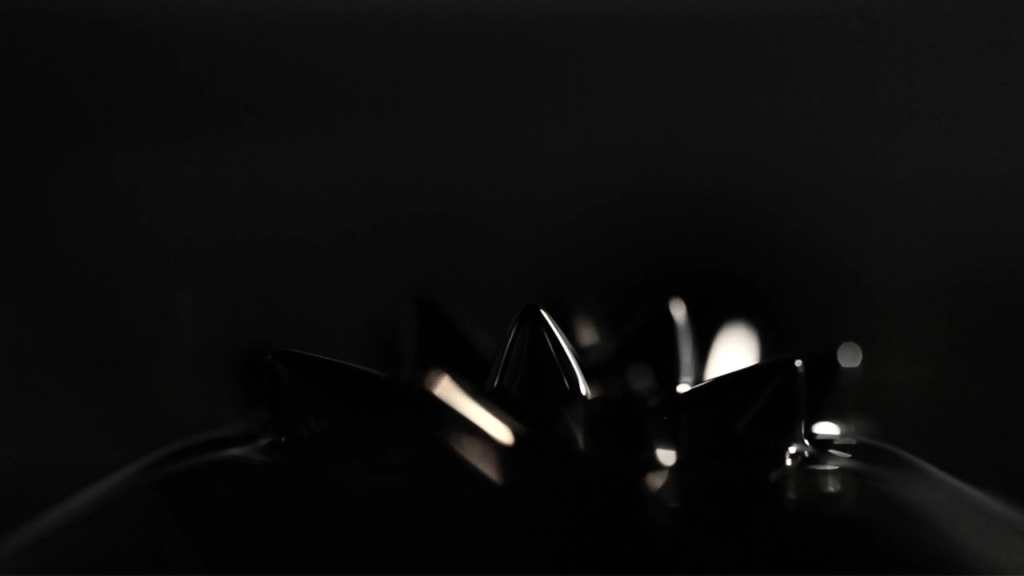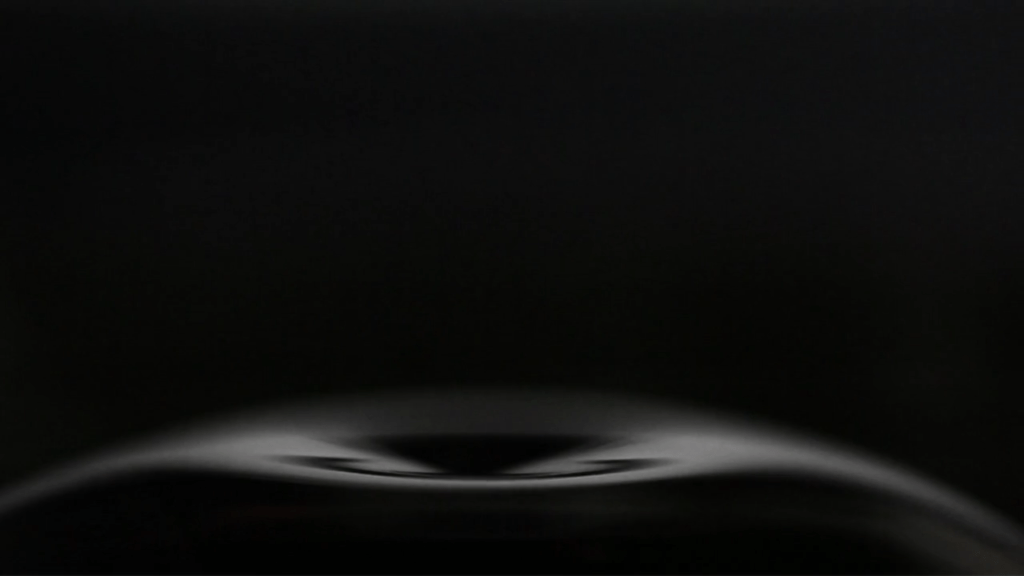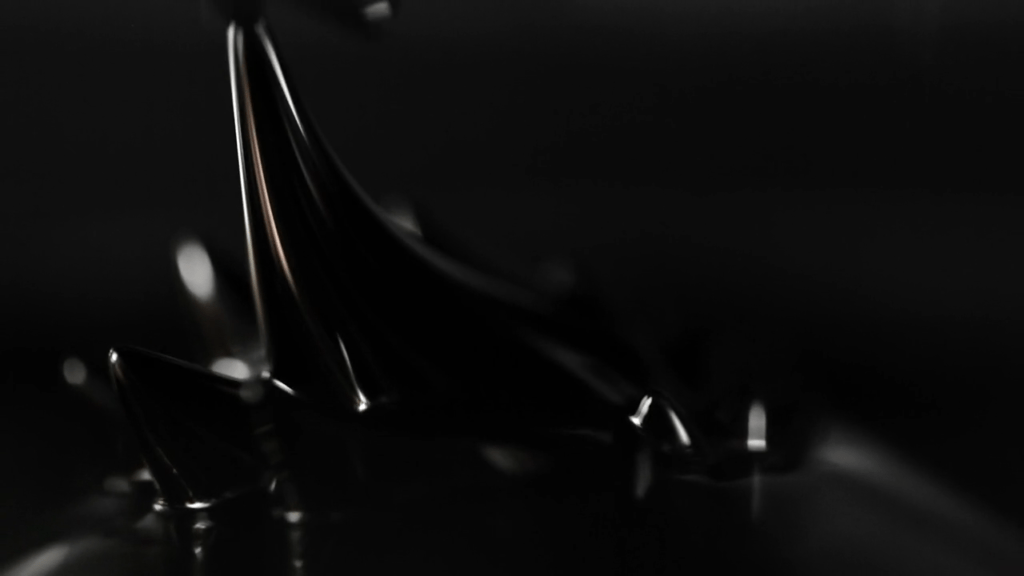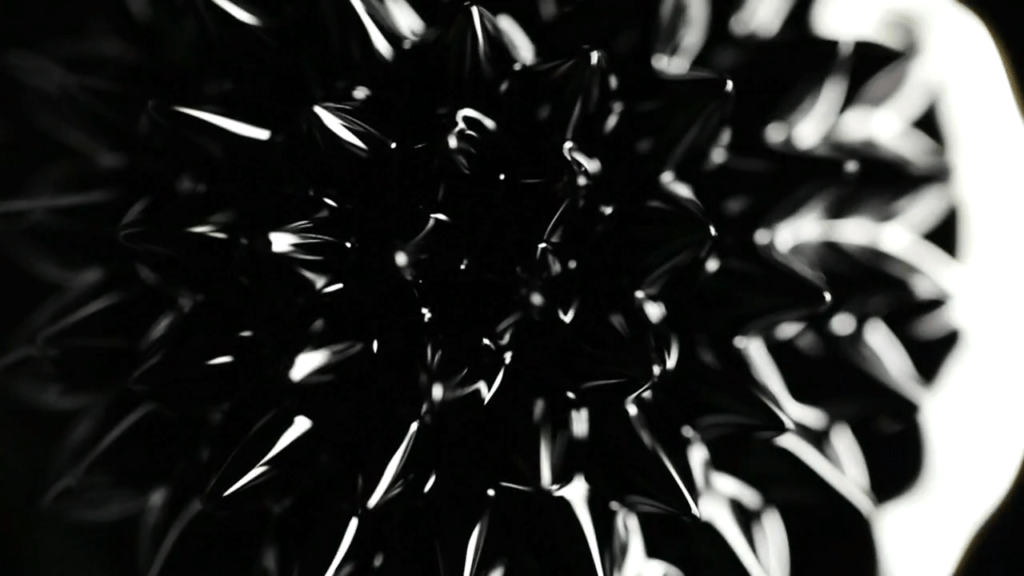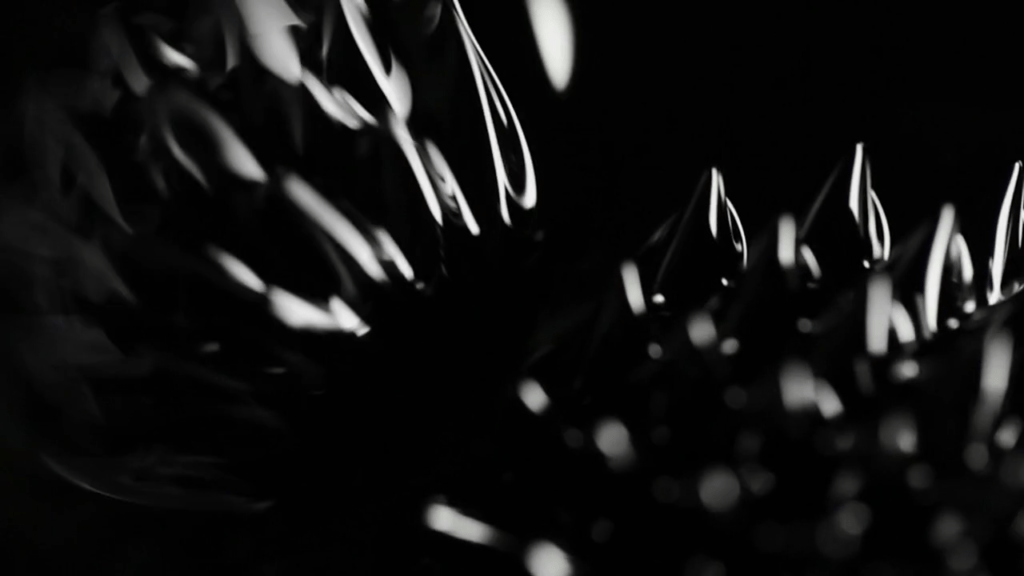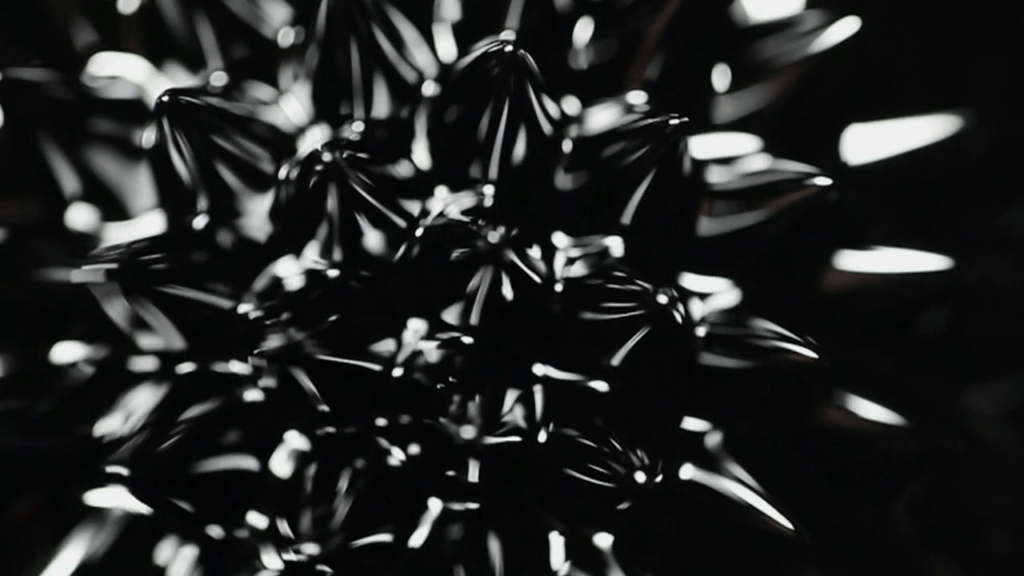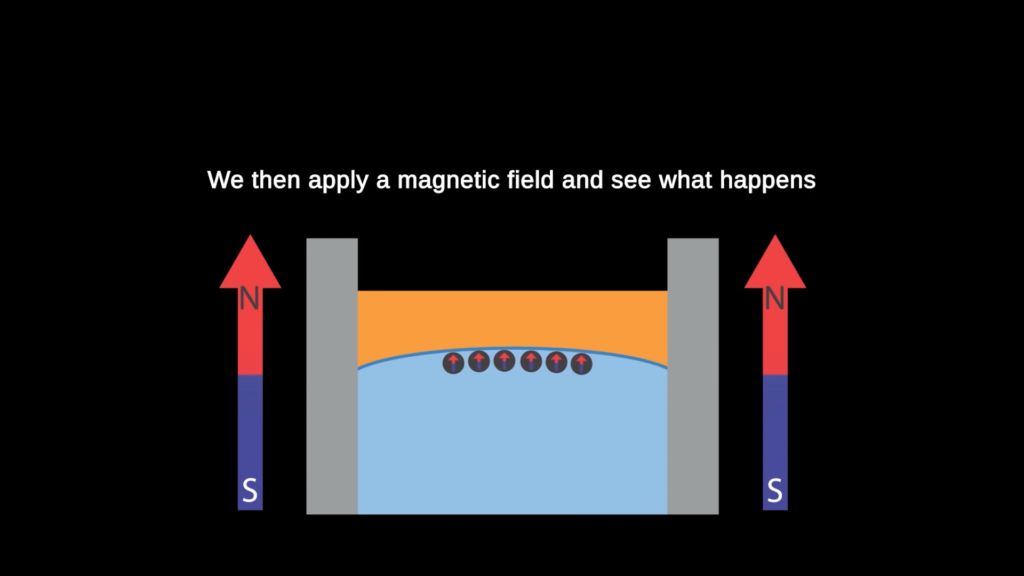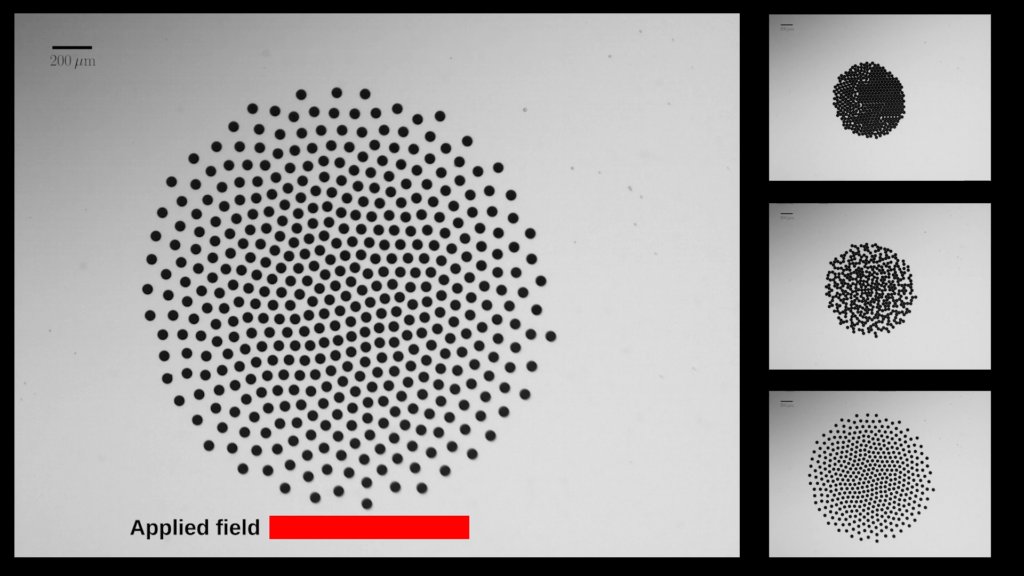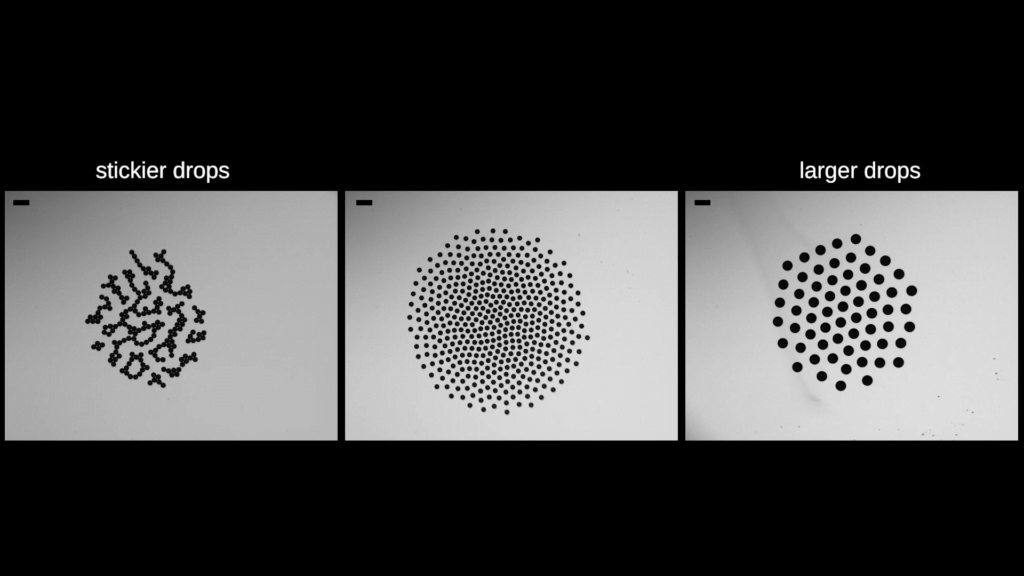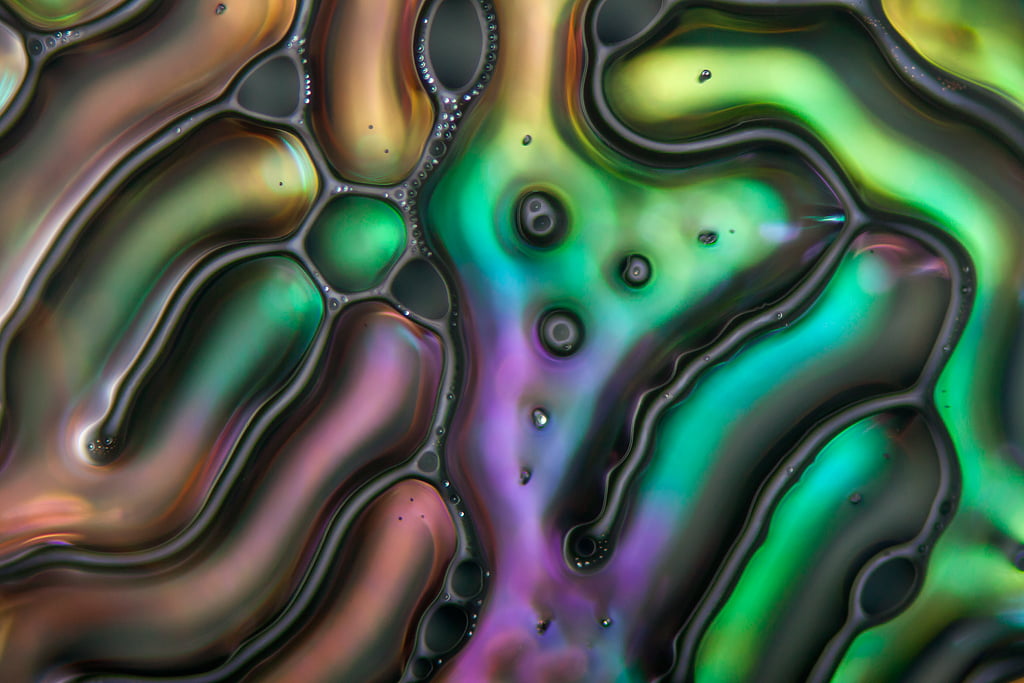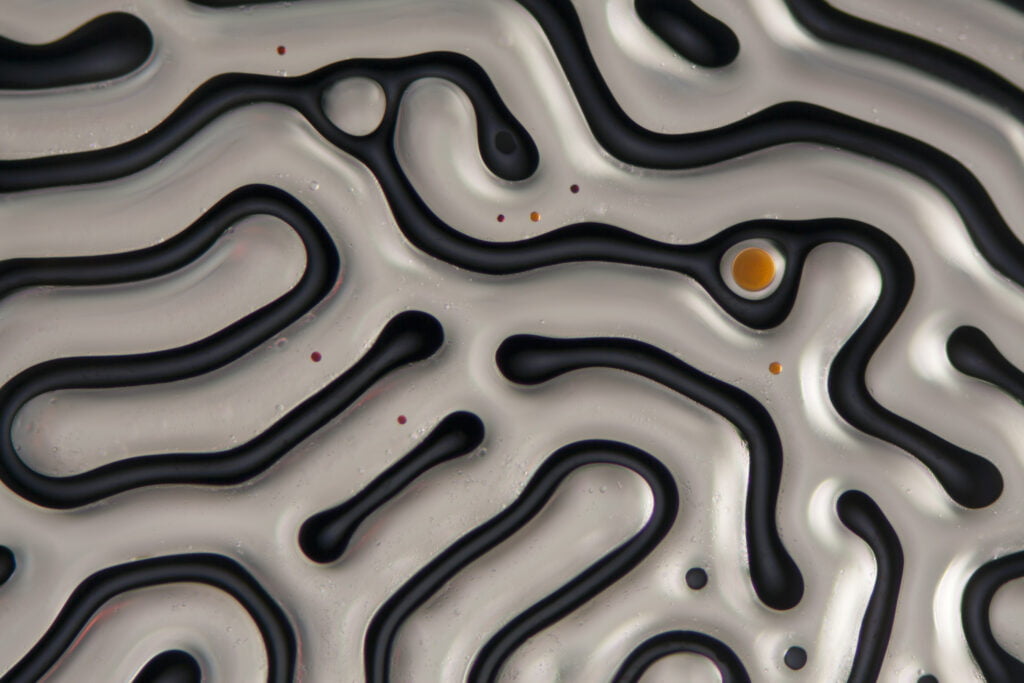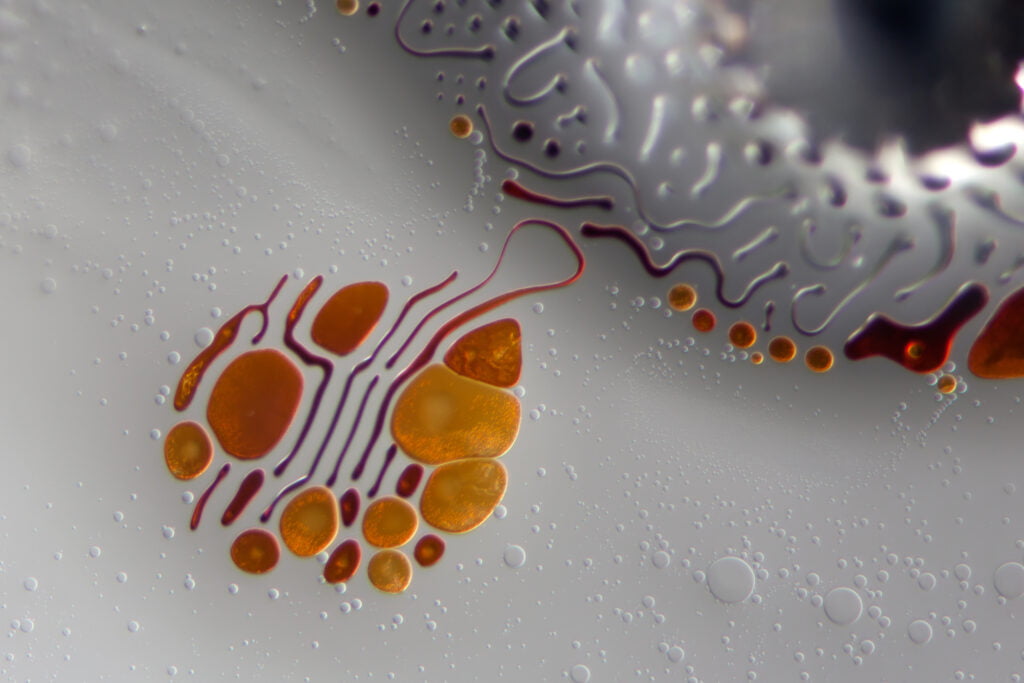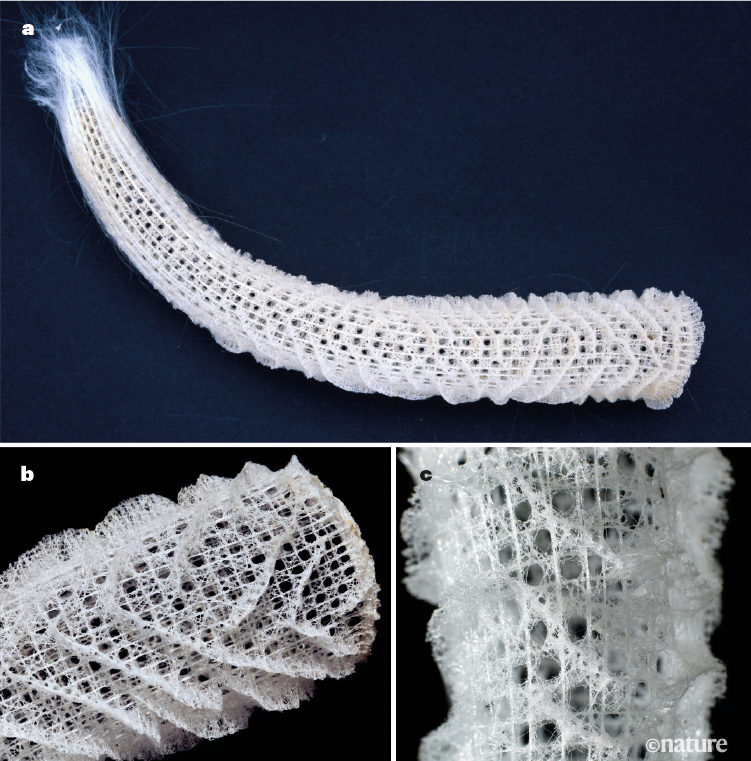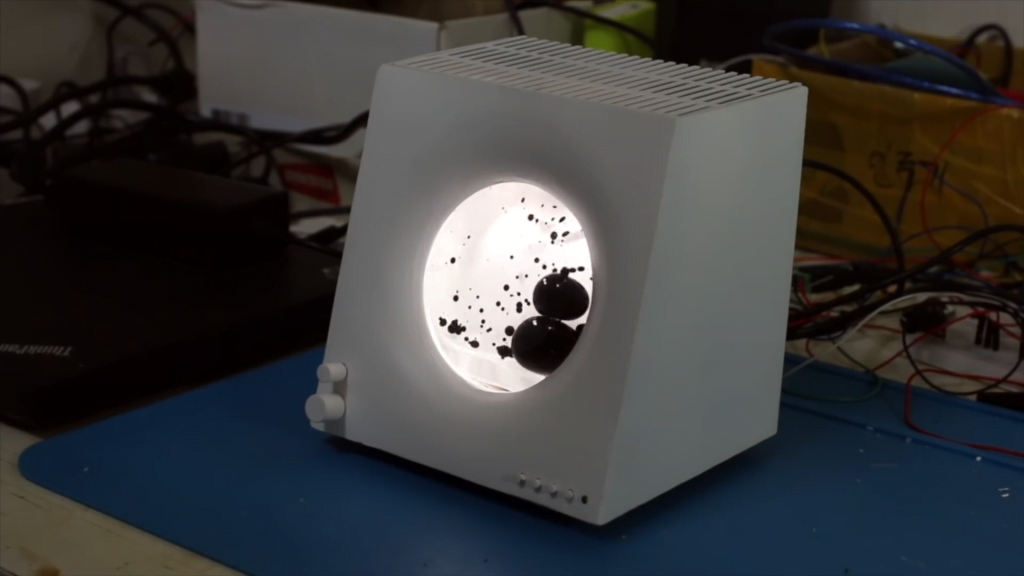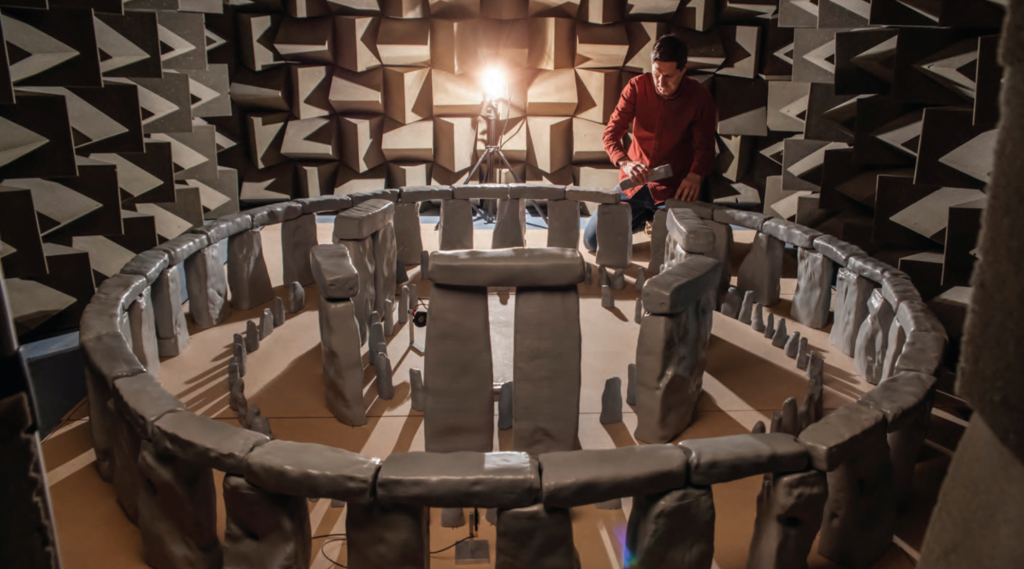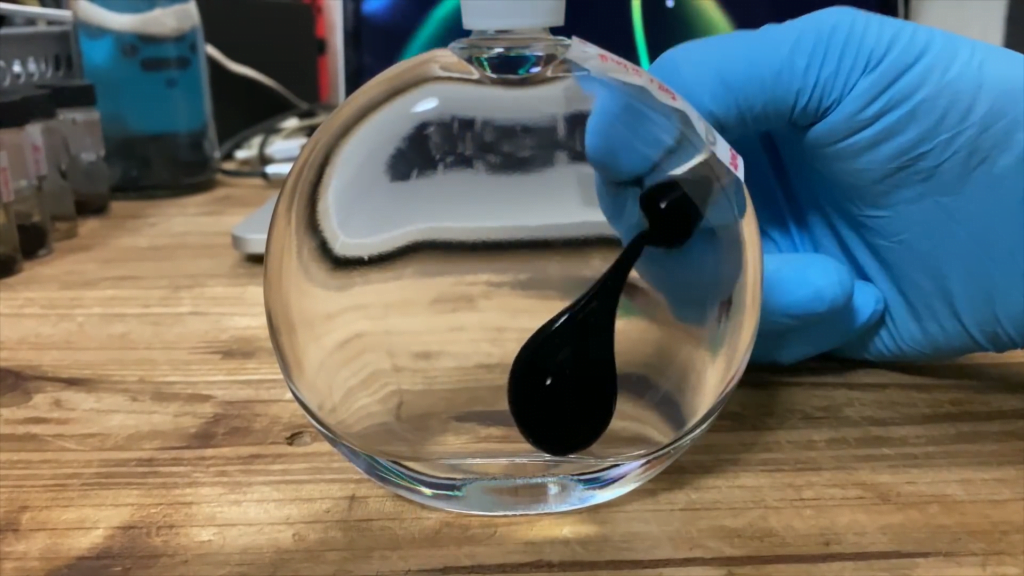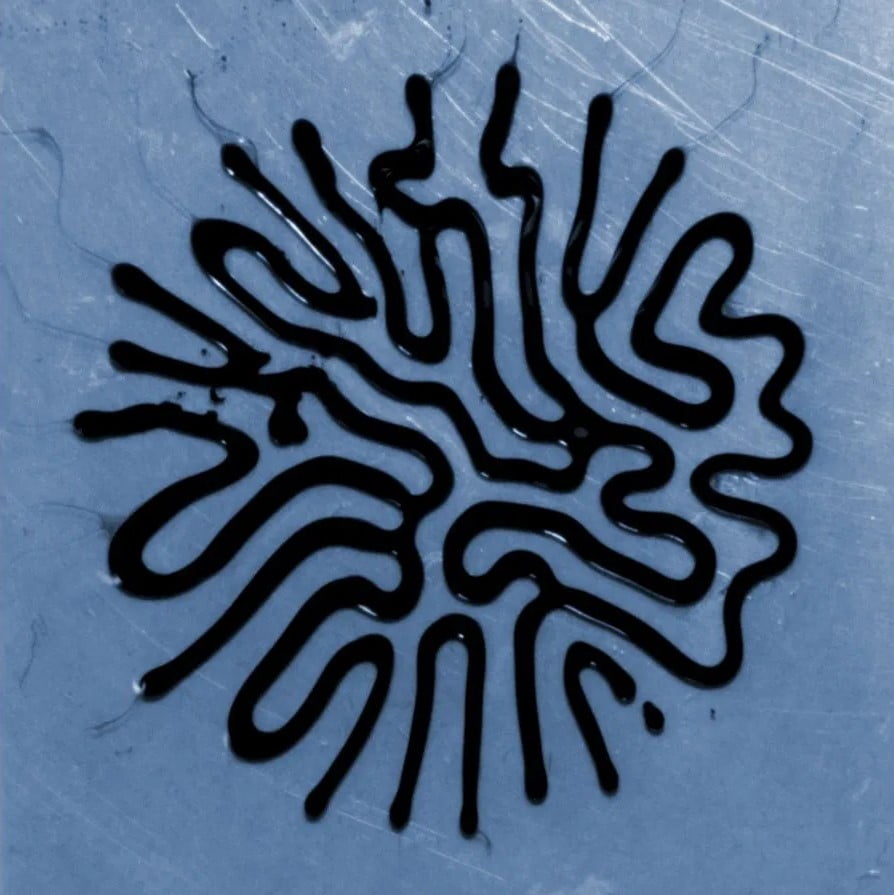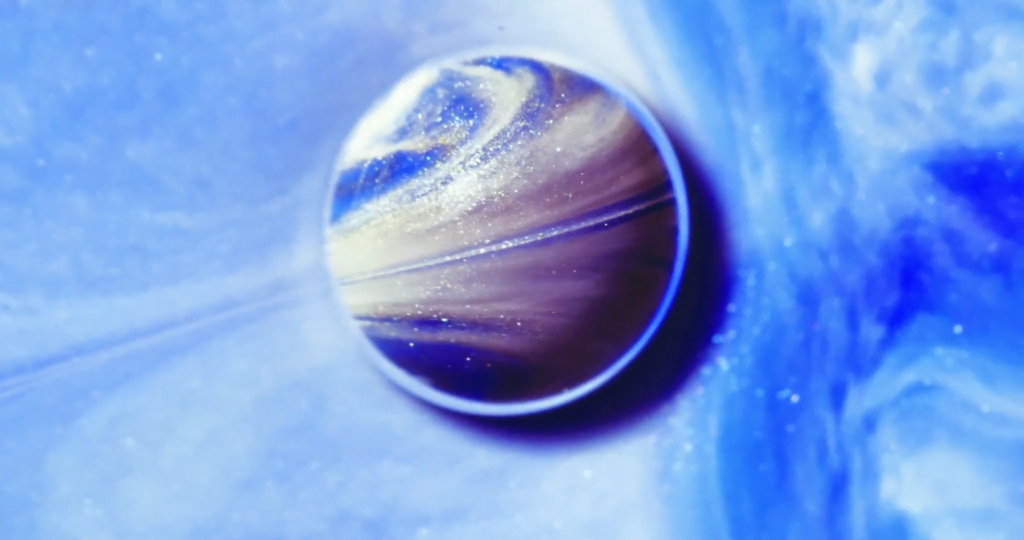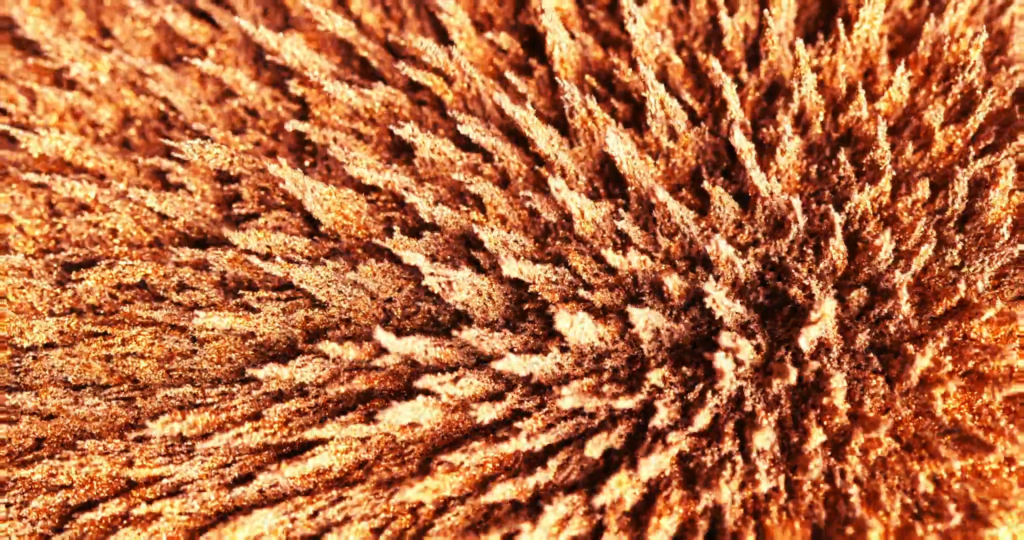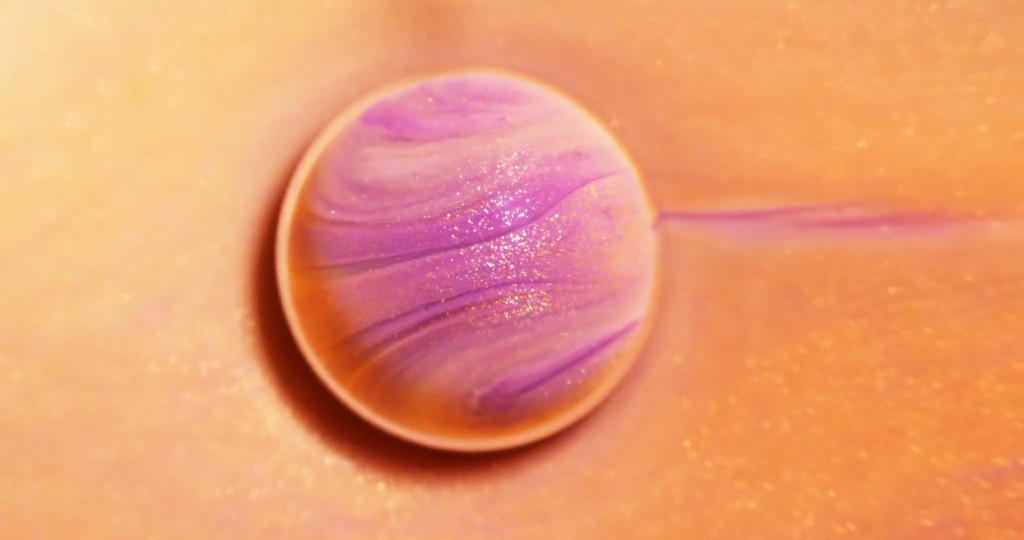In “Re:Birth,” videographer Vadim Sherbakov explores the fascinating patterns of ferrofluids, which suspend tiny ferrous particles in another liquid, often oil. When this magnetic liquid is mixed with ink or paint, its black lines take on a labyrinthine appearance. The result is rather psychedelic, especially with Sherbakov’s bold colors. (Video and image credit: V. Sherbakov)
Tag: ferrofluid

“Black”
In “Black,” filmmaker Susi Sie combines her visuals of shifting ferrofluids with the music and soundscape of Clemens Haas to create an ominous, almost claustrophobic vibe. With fast cuts and shallow focus, the sharpened points of the normal-field instability appear as flashes of brightness in the dark. At times, the liquid’s surface looks almost like a speaker cone, which is appropriate since ferrofluids are frequently used in speakers to provide cooling and enhance performance. (Video and image credit: Susi Sie)

Making Magnetic Crystals From Ferrofluids
Ferrofluids are a great platform for exploring liquids and magnetism. Here, researchers trap ferrofluid droplets along an oil-water meniscus and then apply a magnetic field that makes the drops repel one another. The results are crystalline patterns formed from magnetic droplets. For a given patch of drops, increasing the magnetic field’s strength pushes drops further apart. But changing the drops’ size and levels of self-attraction also shifts the patterns. Check out the video to see the crystals in action. (Video and image credit: H. Khattak et al.)

“Ferro Field”
Ferrofluid forms a labyrinth of blobs and lines against a white background in this award-winning photo by Jack Margerison. Ferrofluids are a magnetically-sensitive fluid, typically created by suspending magnetic nanoparticles in oil. Depending on the ferrofluid’s surroundings that and the applied magnetic field, all sorts of patterns are possible from spiky crowns to wild mazes. (Image credit: J. Margerison from CUPOTY; via Colossal)

A Forest of Ferrofluids
Ferrofluids are made up of ferrous nanoparticles suspended in a carrier fluid like an oil. Under magnetic fields, they take on an array of shapes — from pointed spikes to elaborate labyrinths — depending on the field strength and what fluids they’re surrounded by. This photographic series by Linden Gledhill captures some of that fantastic variety, with ferrofluids that look like cells and nebulas in addition to mazes and tridents. See more of Gledhill’s work at his website and in previous posts. (Image credit: L. Gledhill)

The Best of FYFD 2021
A year ago I observed what a strange year 2020 had been, and in many ways, I could say the same of 2021. Before the pandemic, I spent quite a lot of time traveling. In 2021, the only nights I slept outside my own bed came on a long weekend up to the mountains with my family. But 2021 also saw a bit of a return to normalcy – I was giving keynote addresses and workshops again, albeit virtually. What will 2022 hold? Who knows?!
As per tradition, here are the top FYFD posts of 2021:
- A superior mirage leaves a ship floating in mid-air
- Drone videos of sheep herding are mesmerizing
- Permeable pavement allows water to drain
- The slow and dreamy fluid landscape of “Le Temps et l’Espace”
- What do you do when you’re an insect researcher with a high-speed camera?
- Satellite images… or paint?
- The intricate lacework of the Venus’s flower basket sea sponge
- Building a Bluetooth speaker with ferrofluid music visualization
- Finding the acoustics of Stonehenge
- Making butter by traditional French methods
It’s an eclectic mix of topics this year: bizarre phenomena, stunning art, archaeological exploration, and a touch of biophysics!
If you enjoy FYFD, please remember that it’s primarily reader-supported. You can help support the site by becoming a patron, making a one-time donation, buying some merch, or simply by sharing on social media. And if you find yourself struggling to remember to check the website, remember you can get FYFD in your inbox every two weeks with our newsletter. Happy New Year!
(Image credits: mirage – D. Morris, sheep – L. Patel, pavement – Practical Engineering, Le Temps – T. Blanchard, insects – Ant Lab, Satellike – R. De Giuli, sea sponge – G. Falcucci et al., speaker – DAKD Jung, Stonehenge – T. Cox et al., butter – Art Insider)

Visualizing Music With Ferrofluids
Here’s an ultra-cool DIY project: a Bluetooth speaker with ferrofluid music visualization! The music playing through the speaker drives an electromagnet, which causes the magnetic ferrofluid to pulse and shred in time with the music. Check out the video to see the project in action plus footage of the build coming together. (Video and image credit: DAKD Jung; via Gizmodo)

Ferrofluid Snakes
We’re used to seeing ferrofluids — with their suspended iron nanoparticles — as spiky fluids when exposed to a magnetic field. But this is not always the case. Here, the ferrofluid is immersed in a thin liquid layer — window cleaner, in this case — and when a magnet is brought near, it forms snake-like, labyrinthine lines. (Image credit: M. Carter et al.)

Pumping Through Liquid Tubes
As the tubes carrying a liquid get smaller, it becomes harder and harder to keep fluids flowing. Friction between the fluid and the wall brings flow there to a standstill and means that moving fluid through tiny tubes requires enormous forces. To alleviate this issue, a new study uses a clever arrangement of magnets to create a tube with ferrofluid walls instead of solid ones.
The researchers call their liquid-walled pipes “antitubes” and show off just how useful they can be. Because the ferrofluid allows liquid to slip by it, flow through the antitubes is nearly frictionless. As seen in the last animation, honey flows about as easily through the antitube as it does with no tube in place at all!
The antitubes are also easy to modify into valves and pumps just by applying (and/or moving) a magnet (Images 1 and 2). Combined with their low friction, these features make antitubes perfect for applications like pumping blood outside the human body without damaging delicate cells. You can see a demonstration of that in the video above. (Video, image, and research credit: P. Dunne et al.; via Physics World; submitted by Kam-Yung Soh)

“The Other Side”
“The Other Side” is a short film imagining fluids on the other side of people’s eyes. The fast-paced editing makes this one feel rather different from Thomas Blanchard’s other films, which often take the time to linger on the mixing of soaps, inks, and paints that form the bulk of the imagery. There are hints of ferrofluids here, too, but like much of the action, if you blink you’ll miss it.
Strange as it may sound, there’s actually a strong connection between eyes and fluid dynamics, whether you’re considering the optimal length for eyelashes, the way a tear film coats the eye, or how vision changes in microgravity. (Image and video credit: T. Blanchard)

